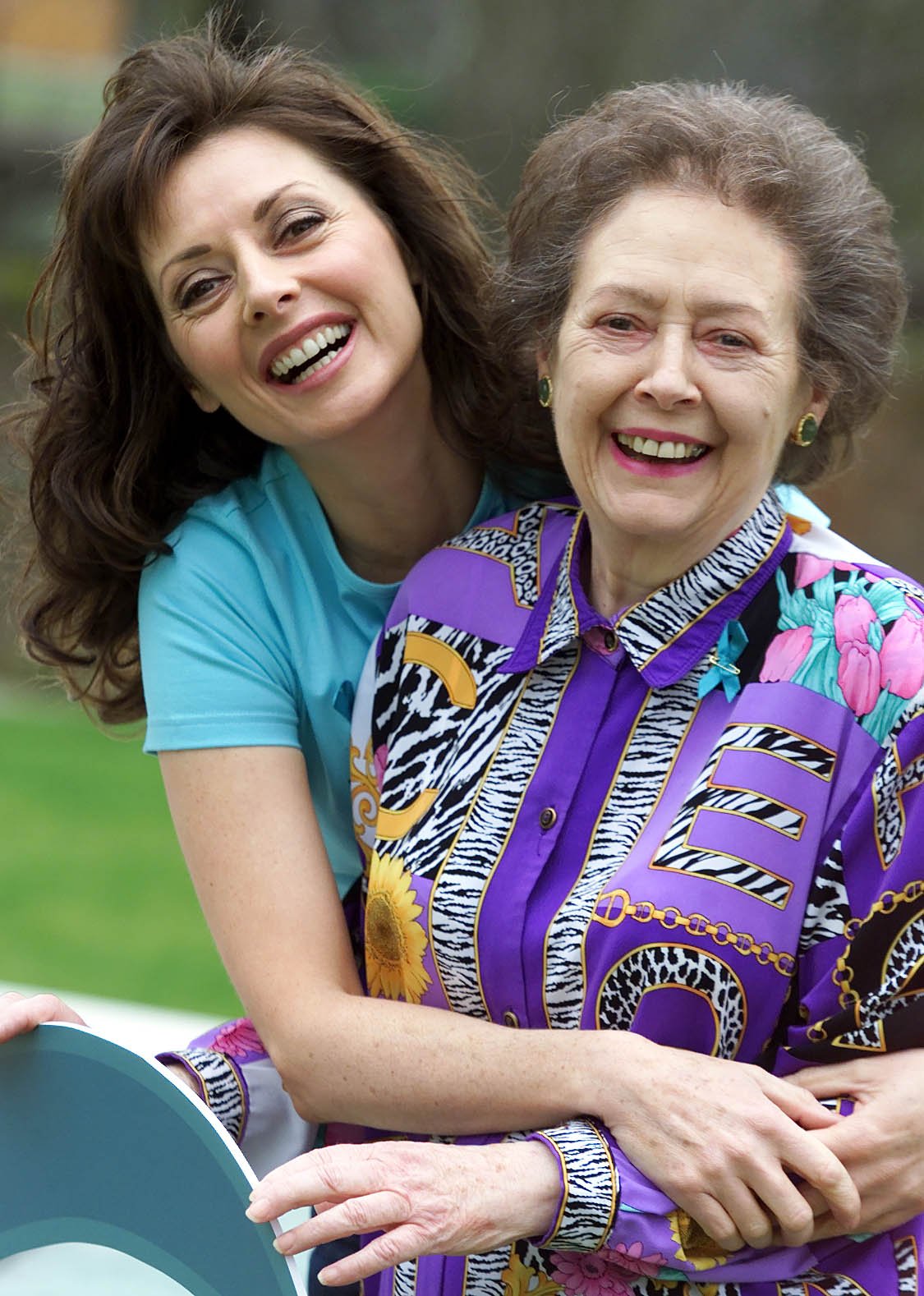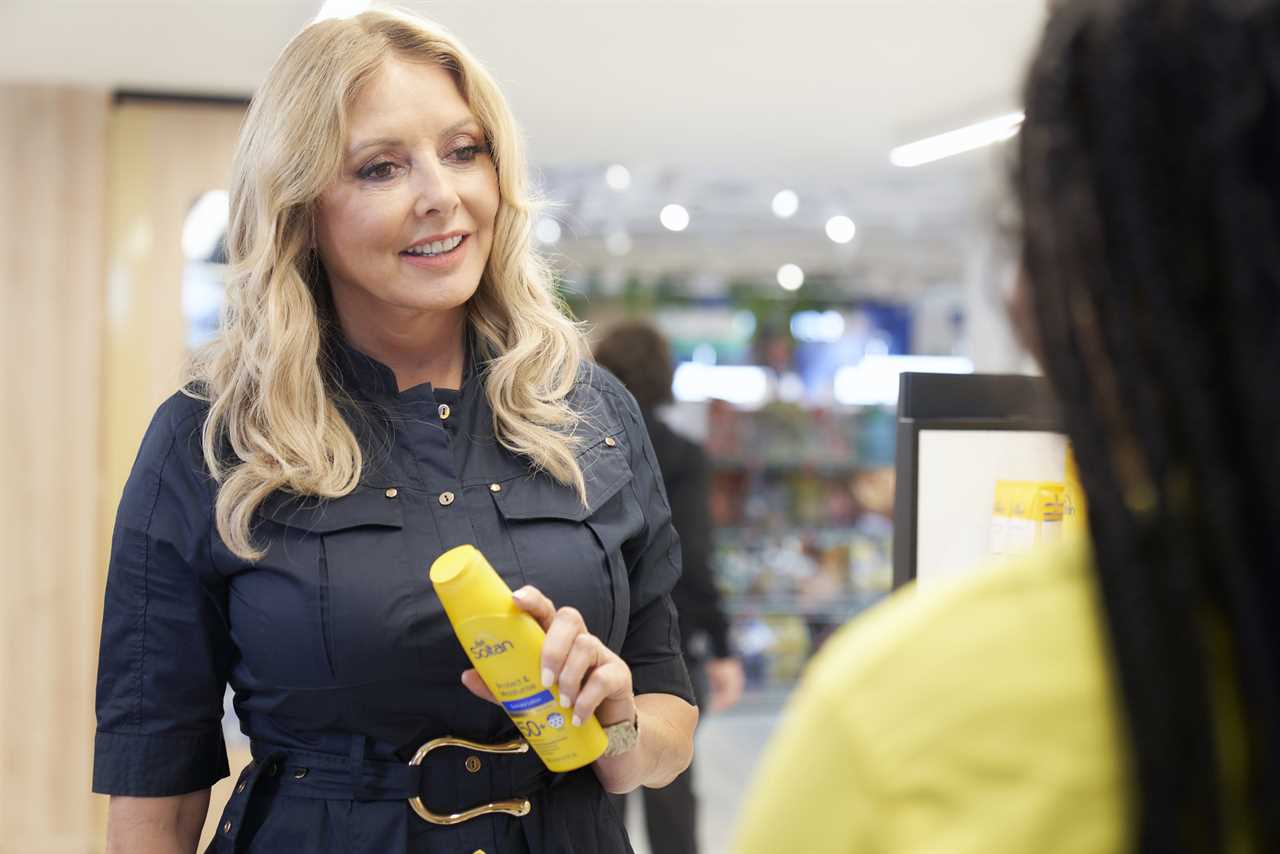CAROL VORDERMAN has shared details of her brush with skin cancer, after losing her mum to the deadliest form of the disease.
The presenter, now 62, said she grew concerned after noticing some changes in her skin over a decade ago.

Carol Vorderman lost her own mum, Edwina Davies, in 2017 after she suffered melanoma

Carol has teamed up with Boots to raise awareness on sun protection
After getting her skin biopsied, Carol was horrified to discover that a few of the skin cells were pre-cancerous.
Though she didn’t experience any further symptoms, her brush with the devastating disease has lead her to campaign on the importance of sun safety.
Especially after losing her own mum to melanoma in 2017.
Speaking to Boots – which has teamed up with Macmillan Cancer Support to champion sun safety – Carol said: “When I got to my late forties, I could see there were little bits on my skin which were irregular so I went to a dermatologist. [I had] a biopsy and a couple of them were pre-cancerous.
“You hear that word and it’s very frightening,” the presenter stated.
Her own mum passed away in 2017 after suffering from three types of cancer – the last of which was melanoma.
Speaking to Prudence Wade, Carol said she was of the generation where it was fashionable to sunbathe – “burning away merrily for many, many years” with little to no sun protection, even slathering herself in “cooking oil”.
Her mum didn’t indulge in this blatant sun worship, but she still fell victim to the deadliest form of skin cancer.
“Not a single time in her life did she sunbathe – my mum had a different skin to me, she had moles, I don’t,” Carol said. “I know that makes you much more prone to melanomas.”
Cancer Research UK cited a study that found melanoma risk was higher in people with more than 100 moles compared with people who have fewer than 15 moles.
“With what I’ve gone through, protecting my skin, then my mum with the melanoma then dying, it’s really important to me and my family [to support] what Boots are doing to help customers to keep safe in the sun,” Carol said.
The TV star shared her own tips for keeping safe in the sun.
“Always wear a hat, always slather yourself in SPF 50, check yourself and if there’s anything that you find get it checked as soon as possible.”
How can I protect myself from sun damage?
For the second year running, Boots sun care brand Soltan has teamed up with Macmillan Cancer Support to train sun safety advisers, who will available in stores across the UK to offer guidance this summer.
Their advice is focused around a simple mantra, the three Cs – cream, cover and check.
Soltan sun care scientific adviser, Clare O’Connor said: “Protecting yourself from the sun is one of the most important things you can and should be doing daily all year round, as it could be lifesaving.
“The 3 C’s is a simple and effective way to remember to be sun safe and help protect the whole family.”
She said sun safety advisers like herself can help with choosing the best SPF for them or their family, getting a mole checked out or understanding how to best support those living through cancer.
Her three Cs guidance for keeping safe in the sun included:
CREAM:
- Look for sun protection that has a five star UVA rating
- Use a high SPF, to give greater protection from UV rays
- Don’t miss anywhere: lips, top of ears, back of neck, feet and scalp are all easy to miss places
- Apply frequently being sure to reapply after contact with sand, water, towels or sweating
- Wear enough: use a minimum of eight teaspoons for whole body application for the average adult
COVER:
- Seek shade during the hottest part of the day – in the UK this is between 11am – 3pm from March to October
- Wear a wide-brimmed hat to offer protection to your head, face and neck
- Wraparound sunglasses have UV filters to protect your eyes
- Wearing long, light-fabric clothes with a close natural fibre weave will help protect your skin from UV exposure
CHECK:
- Check your skin regularly: about once a month for changes
- Taking photos of moles or patches of skin can help you notice subtle changes – ask someone to help with those hard to see places.
- If you are worried about moles or pigmented lesions, speak to your GP or NHS 111 about your concerns.
- You can also access the mole scanning service provided by ScreenCancer at Boots to asses a worrisome mole or pigmented lesion and help identify any suspicious moles or lesions that might need further investigation






